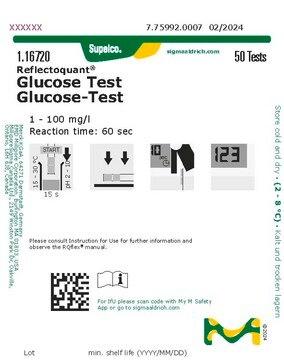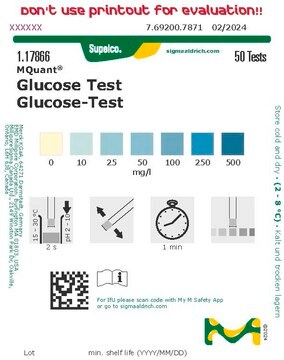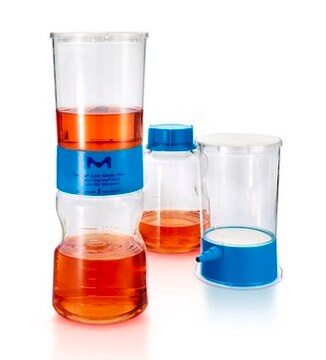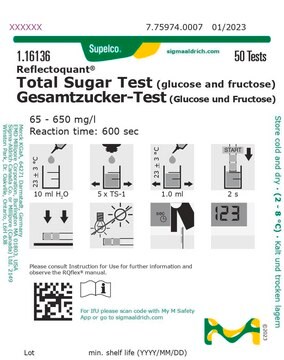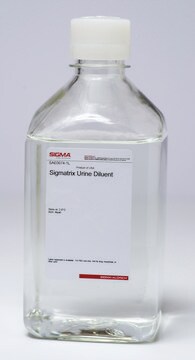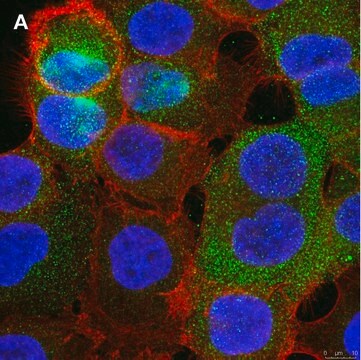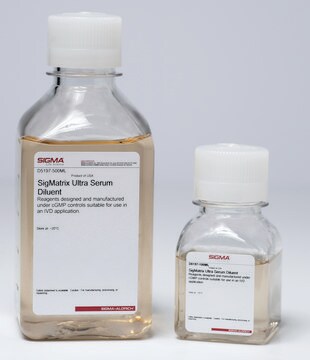MAB1217F
Anti-FMC-7 B-Cell Lymphocyte Marker Antibody, clone FMC-7, FITC conjugated
clone FMC-7, Chemicon®, from mouse
Synonim(y):
Anty-FMC-7, FITC Anti-FMC-7, Wykrywanie markerów komórek B
About This Item
Polecane produkty
pochodzenie biologiczne
mouse
Poziom jakości
białko sprzężone
FITC conjugate
forma przeciwciała
purified immunoglobulin
klon
FMC-7, monoclonal
reaktywność gatunkowa
human
producent / nazwa handlowa
Chemicon®
metody
flow cytometry: suitable
izotyp
IgM
Warunki transportu
wet ice
docelowa modyfikacja potranslacyjna
unmodified
Opis ogólny
Specyficzność
Cell reactivity:1
Stains peripheral blood B lymphocytes and tonsil B lymphocytes. No reaction with granulocytes, monocytes, platelets, erythrocytes, T lymphocytes or null cells. Reacts with HRIK and Raji cell lines.
Clinical9,12,13 Expression
B cell prolymphocytic leukemia (B-PLL) Strongly positive
Hairy cell leukemia (HCL) Strongly positive
Hairy cell leukaemia variant (HCL-V) Strongly positive
Splenic lymphoma with villous lymphocytes (SLVL) Positive
B cell chronic lymphocytic leukaemia (B-CLL) Negative to weakly positive
Immunogen
Zastosowanie
Inflammation & Immunology
Immunoglobulins & Immunology
SUGGESTED USAGE:
Flow cytometry - use 10 μl direct from the vial per 100 μl of whole blood, or 1 x 10E6 peripheral blood mononuclear cells (PBMC) in 100 μl buffer.
Opis wartości docelowych
Powiązanie
Postać fizyczna
Przechowywanie i stabilność
WARNING: The monoclonal reagent solution contains 0.1% sodium azide as a preservative. Due to potential hazards arising from the build up of this material in pipes, spent reagent should be disposed of with liberal volumes of water.
Komentarz do analizy
Human peripheral blood lymphocytes, HRIK and Raji cell lines
Informacje prawne
Oświadczenie o zrzeczeniu się odpowiedzialności
Kod klasy składowania
12 - Non Combustible Liquids
Klasa zagrożenia wodnego (WGK)
nwg
Temperatura zapłonu (°F)
Not applicable
Temperatura zapłonu (°C)
Not applicable
Certyfikaty analizy (CoA)
Poszukaj Certyfikaty analizy (CoA), wpisując numer partii/serii produktów. Numery serii i partii można znaleźć na etykiecie produktu po słowach „seria” lub „partia”.
Masz już ten produkt?
Dokumenty związane z niedawno zakupionymi produktami zostały zamieszczone w Bibliotece dokumentów.
Produkty
Końcówki do wyboru barwników do cytometrii przepływowej dopasowują fluorofory do konfiguracji cytometru przepływowego, zwiększając wydajność panelu.
Protokoły
Zapoznaj się z naszym przewodnikiem po cytometrii przepływowej, aby odkryć podstawy cytometrii przepływowej, tradycyjne komponenty cytometru przepływowego, kluczowe etapy protokołu cytometrii przepływowej i odpowiednie kontrole.
Nasz zespół naukowców ma doświadczenie we wszystkich obszarach badań, w tym w naukach przyrodniczych, materiałoznawstwie, syntezie chemicznej, chromatografii, analityce i wielu innych dziedzinach.
Skontaktuj się z zespołem ds. pomocy technicznej